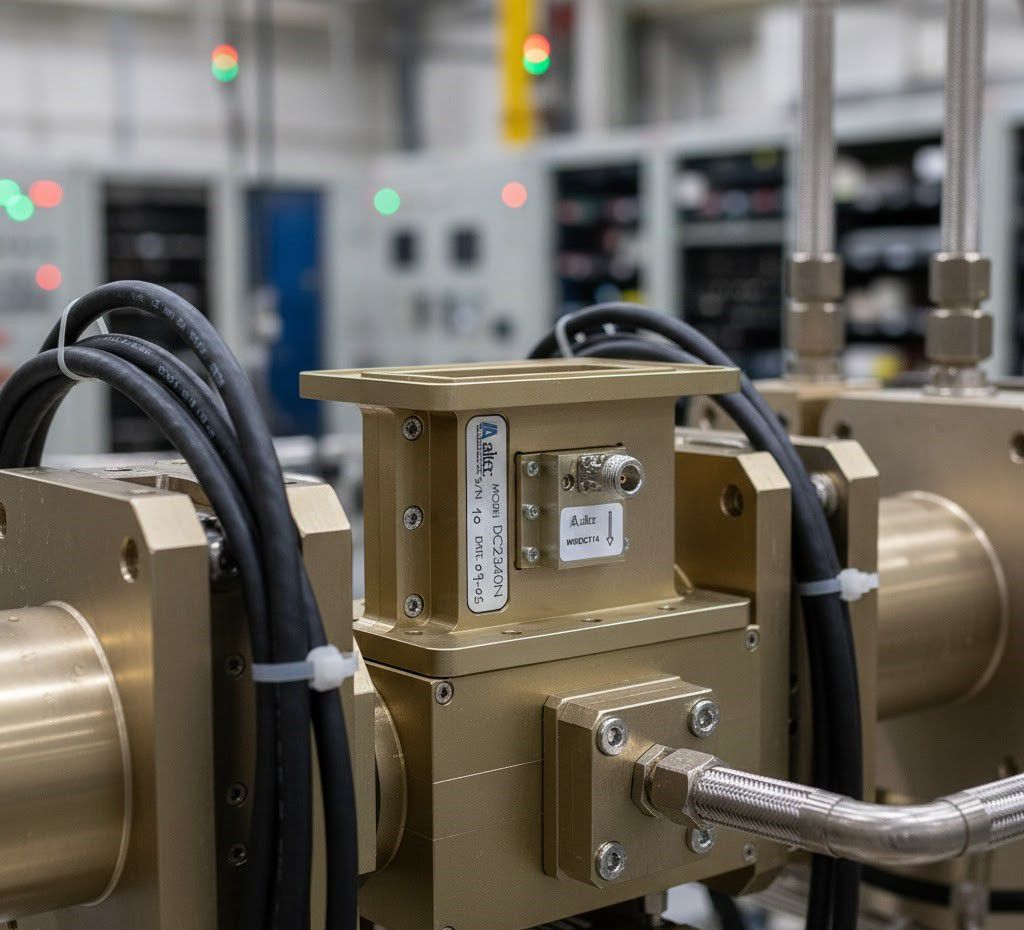RF & Microwave Generators
Solutions for Handling Arcing Phenomena in Vacuum Chambers
Vacuum coating machine operators often encounter situations where the machine is running smoothly then pressure fluctuates, current jumps chaotically and on the target material surface appear black pits. This is a typical sign of the arcing phenomenon, or colloquially called "sparking". If not handled thoroughly, this situation will damage the coating layer, crack the target and even cause explosions in high-power power supplies. The article below delves into the root causes and practical technical measures to overcome this challenging problem.
1. Diagnosing from the cause of charge accumulation on the target surface
The process of local charge accumulation at insulating points on the sputtering target surface is the main cause of the incident. Non-conductive materials formed during the reaction process act like microscopic capacitors, charging energy continuously until exceeding the tolerance threshold and bursting into electric sparks. The massive stream of electrons released at this time will bombard the target material surface, leaving deep craters and splashing unwanted micro-particles onto the product.
Suspended dust particles or small-sized impurities in the machine chamber also frequently cause a short-circuit phenomenon between two poles. They move chaotically under the influence of the electric field and accidentally form a conductive bridge between the cathode and anode or between the target and the cooling shield. Protrusions, sharp edges on jigs or cracked targets also distort electric field lines, creating points of extremely high current density concentration that trigger sparks.
2. How to set up the power supply to extinguish arcs effectively
Modern RF Plasma generator lines like MKS Elite RF Plasma Generators or MKS SM Series Switching Microwave Power Supplies all have arc management functions, operators need to understand clearly to fine-tune parameters correctly. Instead of completely cutting off the output causing the plating process to be interrupted and cooling the ionized gas chamber, the voltage reversal mechanism proves much more effective in reality.

This reverse voltage pulse will immediately neutralize excess charge at the point where an incident is about to occur, eliminating the source of discharge while still keeping the system operating continuously.
The sampling frequency of the control circuit needs to be fast enough to detect voltage drops in time measured in microseconds. Technicians should set detection thresholds more sensitively for ceramic or metal oxide coating processes, which are very prone to generating continuous small arcs. Peak current limits also need to be established strictly to protect the power supply, preventing short-circuit currents from skyrocketing and destroying internal power semiconductor components.
3. Handling shields and cleaning the machine chamber properly
The layer of material adhering to the shields after a long time of operation will thicken and undergo thermal stress, leading to the phenomenon of self-peeling into flakes. These metal debris falling into insulating gaps or the dark space surrounding the target material will cause a chain short-circuit phenomenon that is very difficult to control. The sandblasting method to create roughness for the shield surface helping the coating adhere more firmly is a mandatory solution in the periodic maintenance process.
Precision mechanical machining for details inside the chamber is no less important than the cleaning stage. All corners of jigs, sample holders or anode shields must be rounded to avoid creating a point effect. The smoother and less angular the metal surface, the more evenly the electric field is distributed, helping to completely eliminate hot spots capable of triggering unwanted discharges.
4. Stabilizing gas flow and calibrating the impedance matching box
The automatic impedance matching box plays a key role in eliminating reflected power returning to the generator. To eliminate reflected power returning to the generator, technicians should use a microwave directional coupler combined with an automatic impedance matching box. This device helps measure accurately the forward and reflected energy flow, thereby helping the system adjust in time, preventing the formation of abnormal high voltage points due to standing waves.

The gas supply system must also maintain absolute stable flow through the mass flow controller. The ratio between reactive gas and inert gas kept balanced will help ionization density be uniform across the entire target surface. A stable ionized gas environment will significantly minimize abnormal voltage pulses, thereby preventing the arcing phenomenon right from the operating environment conditions.
-
-
-
-
-
-
-
-
-
-
-
-
-
-
-
-
-
-
-
-
-
-
-
-
